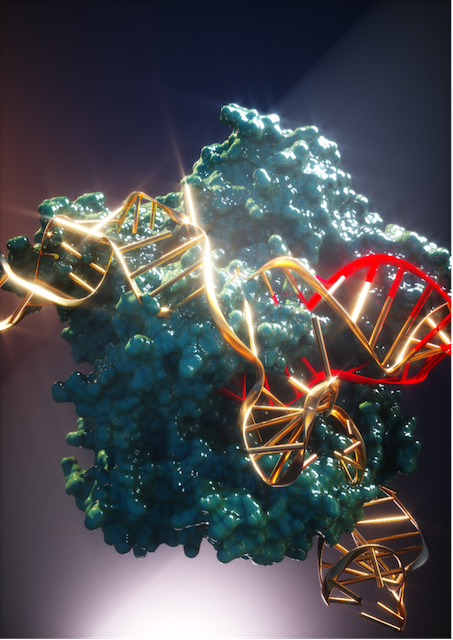Yang Liu
Assistant Professor of Biochemistry
Nucleic Acids, Gene Editing, Biotechnologies, Single-molecule Biophysics, Cell Dynamics, Immunity
Molecular Biology Program
Biological Chemistry Program
Education
B.S. Hunan University
Ph.D. Emory University
Research
We study how cellular machinery detects, signals, and repairs DNA lesions, a collective network known as DNA damage response (DDR). Many human diseases are associated with DDR defects, including developmental abnormalities, accelerated aging, and common cancers. Therefore, a profound understanding of DDR will not only elucidate how life maintains genetic stability but also provide valuable insights for disease therapeutics.
Our laboratory aims to decipher the extensively interconnected DDR pathways inside living cells. In particular, we are interested in the physical and chemical principles governing DNA repair processes. Conventional assays using chemical mutagens and physical radiation struggle to recapitulate cellular responses to distinct types of DNA lesions on targeted genome sequences, structures, and functional compartments. At the University of Utah, we leverage state-of-the-art chemical biology, genomics, and microscopy techniques to explore DDR processes within its genomic and cellular context. Specifically, we will 1) build a versatile CRISPR toolkit for on-demand genome perturbation; 2) establish CRISPR-based strategies for nucleic acids imaging; 3) profile chromosome dynamics at the systems level, emphasizing the proteomic and structural changes during DNA repair.
We recently developed a controllable CRISPR-Cas9 technology, termed very fast CRISPR (vfCRISPR) (Liu et al., Science 2020). With photocaged nucleotides integrated into its guide RNA, the vfCRISPR system can induce DNA double-strand breaks (DSB) after light stimulation and with second-scale temporal resolution. This enabling technique, akin to the ‘Channelrhodopsin’ in optogenetics, allows ultrafast genome perturbation and is compatible with multi-omics and imaging methods to capture the molecular changes in DSB repair. Together, our interdisciplinary research in nucleic acids, gene editing, and cellular biophysics will significantly deepen our knowledge of genome maintenance and shed light on improving biotechnologies for precision genome editing.

vfCRISPR in action under light (gRNA, gold; DNA, red)
References
- Massively parallel genomic perturbations with multi-target CRISPR interrogates Cas9 activity and DNA repair at endogenous sites. Nat Cell Biol. 2022 Sep;24(9):1433-1444. doi: 10.1038/s41556-022-00975-z. Epub 2022 Sep 5. PubMed PMID: 36064968; PubMed Central PMCID: PMC9481459.
- Zou, R.*; Liu, Y.*; Wu, B.; Ha, T. Rapid and complete Cas9 deactivation using photocleavable guide RNAs, Molecular Cell 2021, 81(7), 1553-1565
- Liu, Y.*; Zou, R.*; He, S.; Nihongaki, Y.; Li, X.; Razavi, S.; Wu, B.; Ha, T. Very Fast CRISPR On Demand, Science2020, 368 (6496), pp 1265-1269
- Biswas, J.*; Liu, Y.*; Singer, R.H.; Wu, B. Fluorescence Imaging Methods to Investigate Translation in Single Cells. Cold Spring Harbor Perspectives in Biology2019, pp: a032722.
- Liu, Y.; Galior, K.; Ma, V.P.; Salaita, K. Molecular Tension Probes for Imaging Forces at the Cell Surface. Accounts of Chemical Research 2017, 50 (12), 2915–2924
- Liu, Y.; Blanchfield, J. L.; Ma, V.P.; Andargachew, R.; Galior, K.; Liu, Z.; Evavold, B.; Salaita, K. DNA-based Nanoparticle Tension Sensors Reveal that T-cell Receptors Transmit Defined pN Forces to Their Antigens for Enhanced Fidelity. Natl. Acad. Sci. USA, 2016,113 (20), 5610-5615
- Liu, Z.*; Liu, Y.*; Yuan, Y.; Seyf, H.; Henry, A.; Mattheyses, A.; Yehl, K.; Zhang, Y.; Huang, Z.; Salaita, K. Nanoscale Optomechanical Actuators for Controlling Mechanotransduction in Living Cells. Nature Methods2016,13, 143-146
- Ma, V.P.*; Liu, Y.*; Blanchfield, J.L.; Galior, K.; Salaita, K. Ratiometric tension probes for mapping receptor forces and clustering at intermembrane junctions. Nano Letters 2016, 16(7), 4552-4559
- Galior, K.*; Liu, Y.*; Yehl, K.; Vivek, S.; Salaita, K. Titin-based Nanoparticle Tension Sensors Map High-Magnitude Integrin Forces within Focal Adhesions. Nano Letters2015,16 (1), 341-348
- Liu, Y.; Medda, R.; Liu, Z.; Galior, K.; Yehl, K.; Cavalcanti-Adam, E.A.; Spatz, J.P.; Salaita, K. Nanoparticle Tension Probes Patterned at the Nanoscale: Impact of integrin clustering on force transmission. Nano Letters 2014, 14(10), 5539-5546
- Liu, Y.; Yehl, K.; Narui, Y.; Salaita, K. Tension Sensing Nanoparticles for Mechano imaging at the Living/non-Living Interface. Am. Chem. Soc. 2013, 135 (14), 5320–5323

